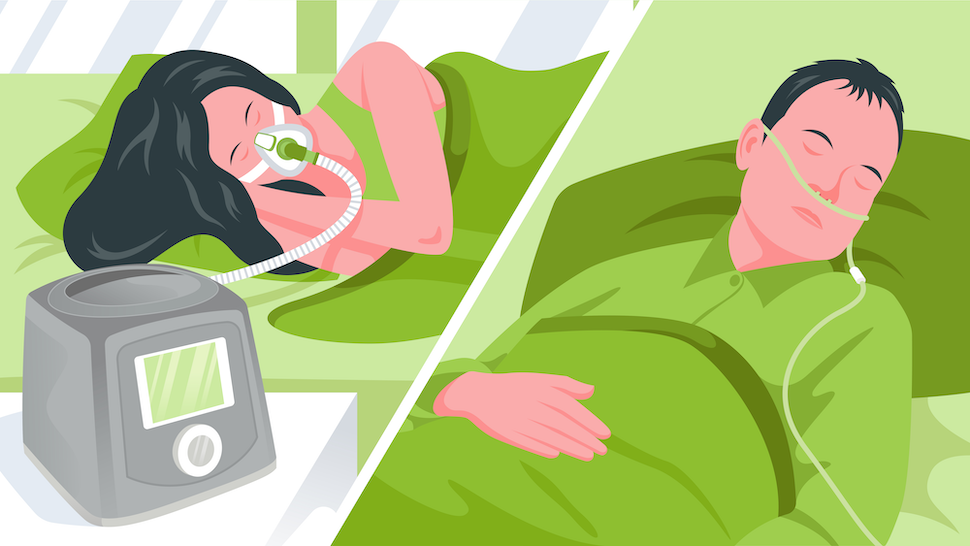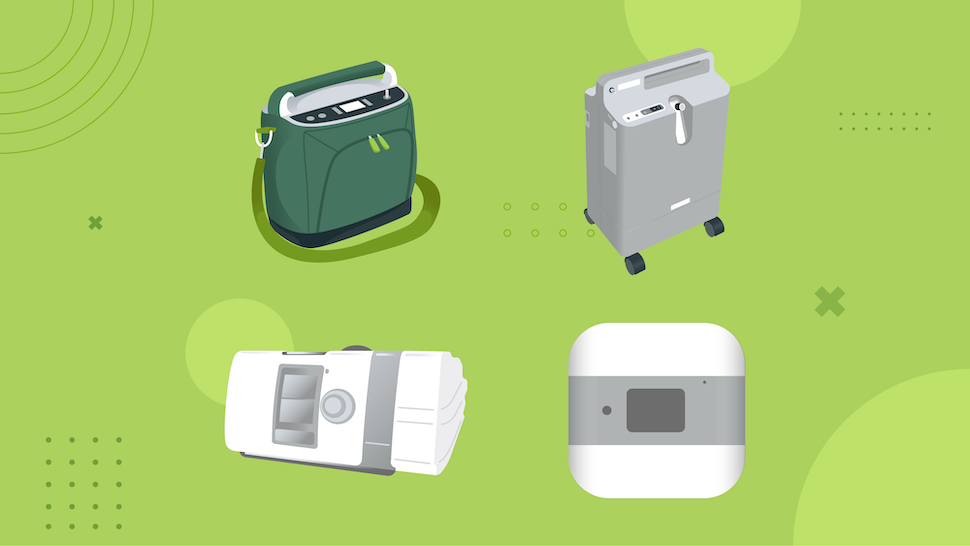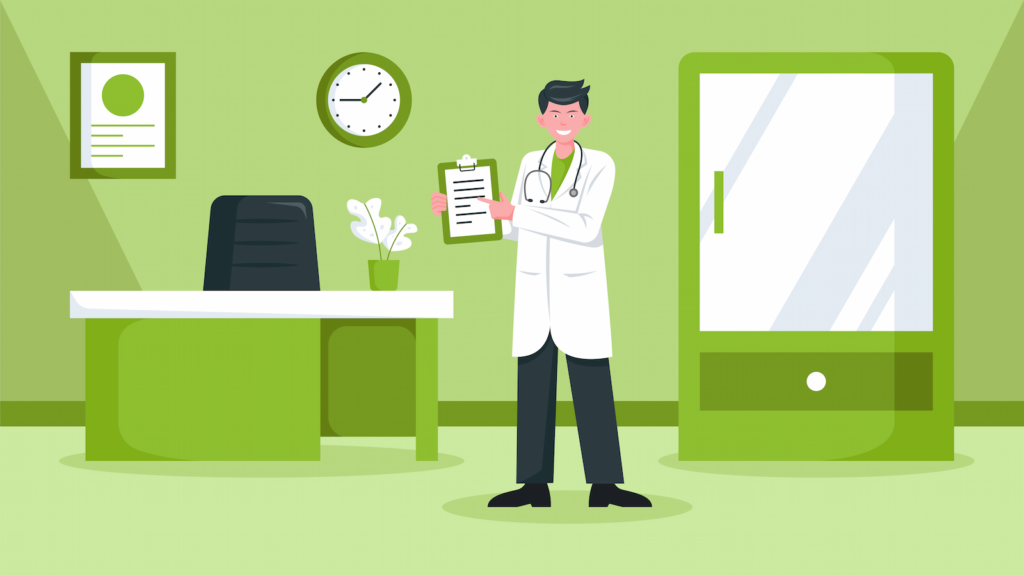Essential considerations to help you determine the best approach to managing your sleep or breathing symptoms
Oxygen concentrators and CPAP machines are medical equipment designed to treat various respiratory issues or sleep disorders.
While they might be used together in some cases, they’re not interchangeable, and both offer unique benefits.

However, there is often confusion about why you might consider one machine over the other.
If you’re unsure which machine is best for your needs, this guide should provide the essential information needed to start a conversation with your doctor and define a path toward safe and effective treatment of your health issues.
Core Differences Between CPAP Machines and Oxygen Concentrators
PAP machines function by pumping air from the surrounding environment through a tube to a mask that rests on your mouth, nose, or both.
Often, humidity or heat are added to improve comfort.
Exact airflow characteristics will vary by machine and prescription type, but in general, the airflow is steady and works to hold open your airways to promote smooth breathing and minimize or eliminate apnea episodes.
RELATED GUIDE: Anatomy of a CPAP System
Oxygen concentrators function by removing nitrogen and other gasses from the surrounding air, creating a stream of oxygen with potential purity of 95% or more.

This is most often delivered using a nasal cannula, and flow is in lower volumes than CPAP machines move air in most cases.
Some devices use pulse dose delivery, only dispensing oxygen as you breathe to reduce energy use and maximize oxygen delivery efficiency.
The pressure and airflow volumes delivered by home oxygen concentrators are not typically high enough to open airways and alleviate the primary cause of obstructive sleep apnea.
However, suppose you cannot efficiently absorb oxygen while breathing due to conditions such as chronic obstructive pulmonary disease (COPD) or pulmonary fibrosis.
In that case, it can help to greatly increase lung saturation and blood oxygen levels to help treat a range of symptoms.
RELATED GUIDE: An Introduction to Oxygen Concentrators
In nearly all cases, PAP therapy is a more effective treatment for obstructive sleep apnea.
However, professional diagnosis is always recommended.
Should you have any questions about the particulars of your health and treatment options, consult with your primary care provider or family doctor.
Similarities Between CPAP Machines and Oxygen Concentrators
CPAP machines and oxygen concentrators share a range of traits.
This might be one of the reasons why understanding which is suitable for your needs could get confusing.
Both CPAP machines and oxygen concentrators are available in portable or stationary models.
However, stationary oxygen concentrators are by far the largest and least portable of the devices.

They also both require a power source, use water to humidify the air in most cases, and have some form of filter, which you’ll need to clean or change at specified intervals.
They also both require prescriptions to purchase.
This is because ideal settings for each type of machine could vary greatly from person to person.
Your prescription will help your CPAP or oxygen concentrator supplier configure your machine to the perfect settings recommended by your doctor or sleep specialist.
Using Oxygen Concentrators and PAP Therapy Together
Sometimes, both machines can provide benefits for different symptoms.
For example, when someone has both COPD and obstructive sleep apnea (OSA.)
The use of both machines provides the air pressure required to keep airways open while simultaneously increasing oxygen concentrations to allow for lung saturation and optimal symptom management.
In many cases, your CPAP mask or mask tubing will include an inlet or T connection designed to accept connections from oxygen concentrators and provide seamless use of both machines.
However, if your mask or tubing does not provide a connection point, oxygen bleed in adapters can fit between your tubing and mask to provide a connection point for your oxygen concentrator.

As with using either machine separately, using the machines together should only be considered under the guidance of a medical professional, as improper use can create more concerns than it solves.
For example, many COPD patients with OSA require APAP machines.
These machines allow for different air pressures on the inhale and exhale stages of the breathing cycle.
Since COPD makes it difficult to empty the lungs, lower pressure when exhaling can significantly improve symptoms and safety.
Key Takeaways
- Oxygen concentrators and CPAP machines are increasingly popular pieces of medical equipment. However, they both treat different symptoms.
- Stationary oxygen concentrators and standard CPAP machines are both designed for use in a regular location. While you can move them, they’re not intended to move around easily.
- Portable oxygen concentrators and travel CPAP machines provide convenience and portability should you need access to oxygen therapy or PAP therapy away from home.
- Regardless of the design or machine type you choose, you will need access to power (either through connection to an electrical outlet or through battery use) as well as several additional components, including filters, water for humidification, tubing, and masks.
- In most cases, CPAP machines are designed to treat sleep disorders, while oxygen concentrators are designed to treat respiratory issues.
- However, when combined, they can address comorbidities and other complex health scenarios, such as combined COPD and OSA diagnoses.
- In many cases, settings that would be ideal when only using a single machine will change when using both machines simultaneously.
- Oxygen concentrators typically connect to the CPAP mask for dual machine use. However, oxygen bleed adapters can also provide a connection point at the tube level.
- Regardless of the type of machine you use, settings should be optimized by a medical professional to ensure safe and consistent symptom relief.
CPAP Supply is Canada’s leading online CPAP supplies and oxygen concentrator store in customer satisfaction. Whether you’re looking for innovative CPAP solutions, top-rated oxygen concentrators, or both, we have you covered! Browse our selection or contact us today to determine the ideal options for your health needs, budget, and personal preferences.
